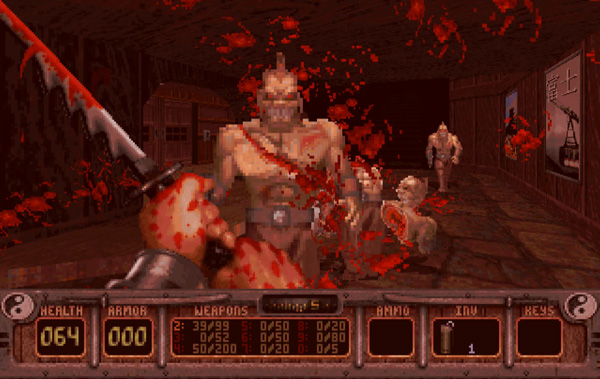
The Sniper franchise is all about stealth, planning and quick moments of anatomically correct violence. The previous game in the series was good, but it didn’t quite click with me the way three has. If my memory can be trusted, I feel like the biggest difference here is that there is now a much more open level design. The sneaking around feels like you are in control rather than being guided on rails. As before, the x-ray vision kill shots are an unnecessary but effective gimmick. There is a story about some sort of super weapon but, whatever. It’s completely forgettable. The game’s mechanics are real highlight here, and I now am excited to play IV when it comes out (just no more desert levels please… this ain’t Serious Sam).

Apparently, The Mermaid was the highest grossing movie in China last year. The 40 different conglomerates listed in the opening credits who produced this film must be happy. Well, good for Stephen Chow. He knows how to create a fun and exciting movie and this is no exception. The CGI effects, as usual, are horrible. It’s like the animators never learned how gravity worked back in middle school. Characters fly in improbable arcs that look more like After Effects animations rather than 3-D. Someone give this man a Hollywood-quality production team next time, he deserves it.

Bleh, these super hero movies need to end. While can’t say I was bored by Ant-Man, it just felt ho-hum to me. All these origin stories feel the same. The action is forgettable and the whole telepathic connection to ants thing just ruined the interesting concept of a shrinking man going after baddies. Oh, and the references to the Marvel universe were completely out of place.

This early version of The Maltese Falcon is played as a comedy. The basics of the story are still there (it’s now a jewel filled horn instead of a bird statuette) and some of the changes are pretty good: casting Alison Skipworth as the ringleader and making Wilbur a dopey cartoon thug. But old-timey comedy rarely holds up and, in this case, it can be a bit squirmy as the main character flirts with women a third his age. That said, I think I like it better than the 1931 version.

Fantastic Thai martial arts movie about a monk’s apprentice going to the big city to retrieve his small village’s stolen Buddha head. Of course he get involved with gangsters, gamblers and underground fighting. The fights are have a very real feel to them despite the acrobatic choreography and insane jumping skills of Tony Jaa. The main characters are likable and it’s really the sidekick George who steals the show when fists aren’t flying.

Having seen the horrible Fight back to School I wasn’t expecting much from this early Stephen Chow comedy. This one at least knows it’s a comedy. There are a few good comic moments, but Chow’s character is genuinely unlikable (like say, Ace Ventura) and, for the most part, Tricky Brains feels like it was written by an eight-year-old with no understanding of how adults behave. It could also be that a lot is lost in translation.

This early version of the Hammet novel hits most of the same plot points of the later version but the acting is corny and there’s a lack of any visual flare to the direction. The story is still good and there is a plot hole that’s filled out in this version (a witness to the crime is the key piece evidence which seems to have been added completely as an afterthought)

While it had one or two actual jump scares in it (a rarity for American films of this vintage), this is more of a mystery movie. The performances are all above average for a B-movie and it does have a certain style to it, but this movie is just silly and riddled with plot holes. The movie ends with a climax so ridiculous it’s probably worth watch or at least just fast forwarding to the end.

This is a classic FPS from the same people who brought us Duke Nukem 3D. In this outing, the politically incorrect humor is based around the protagonist’s ridiculous Asian accent and culturally insensitive one-liners. It can be quite cringe-worthy at times, but inevitably it’s harmless. Especially when compared to the over-the-top gore and violence. Ah, the 90’s. If you can find your safe space, what remains is an exciting game that sticks to the usual run and gun formula of this era. There are a lot of crazy weapons, tough enemies and unique level designs (for the time). Modern gamers may scoff at the lack of narrative and primitive presentation, but I thought it was fast, offensive, silly fun.

This compilation covers Italian films from the early Seventies all the way to 1991’s Hobgoblin and features compositions from a wide range of artists that aren’t Ennio Morricone. I got this CD for something like seven dollars from Amazon and, as of this writing, it’s still available for cheap. Often times the music is the best part of Italian B-cinema and this disc provides a good overview for someone looking for a starting point. The best known tracks are probably the two from Zombi but my favorite is “Hell Flames” from Demon.




